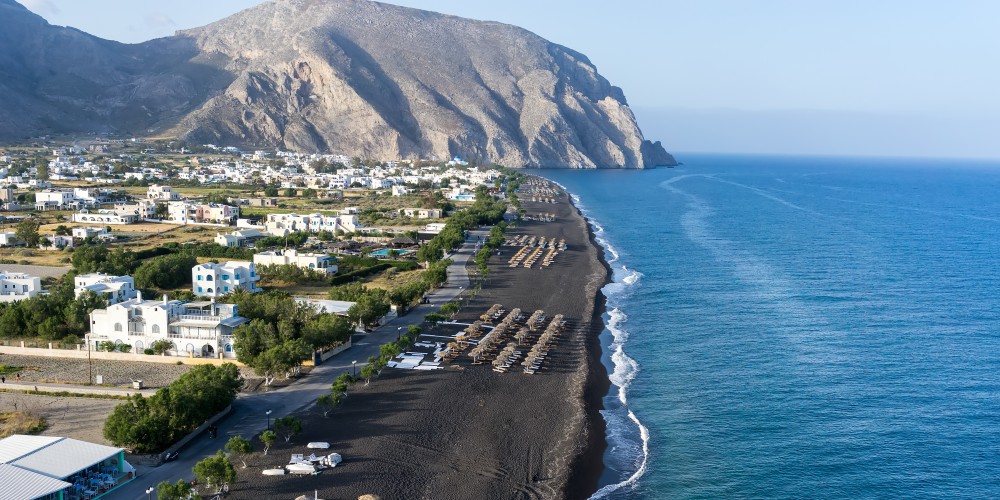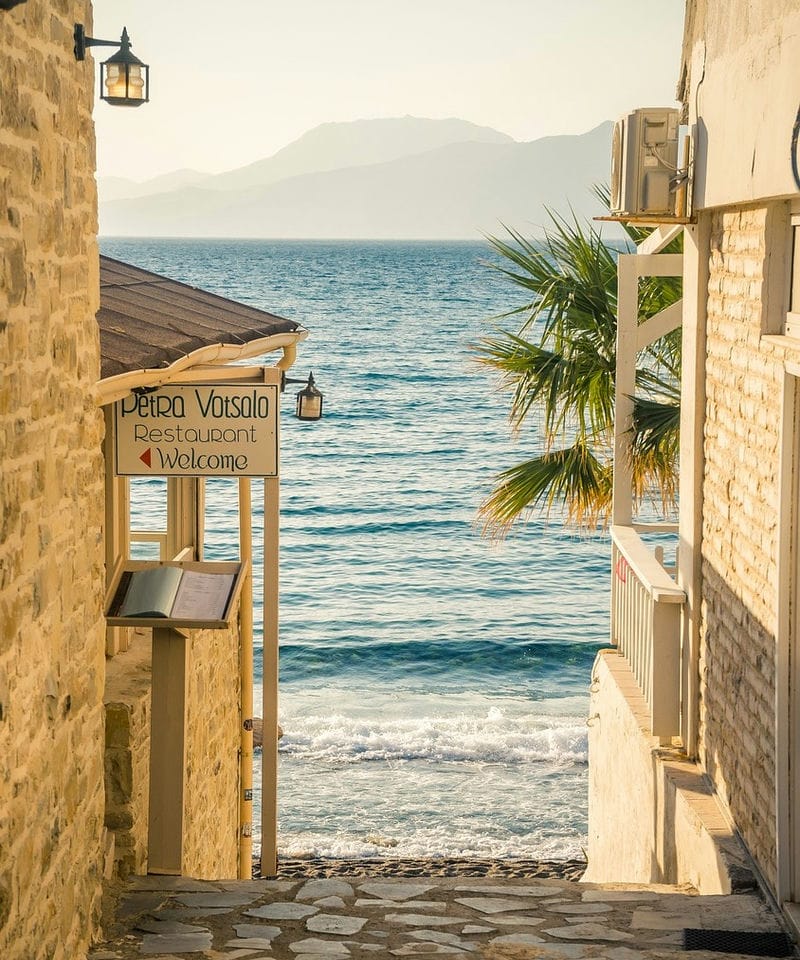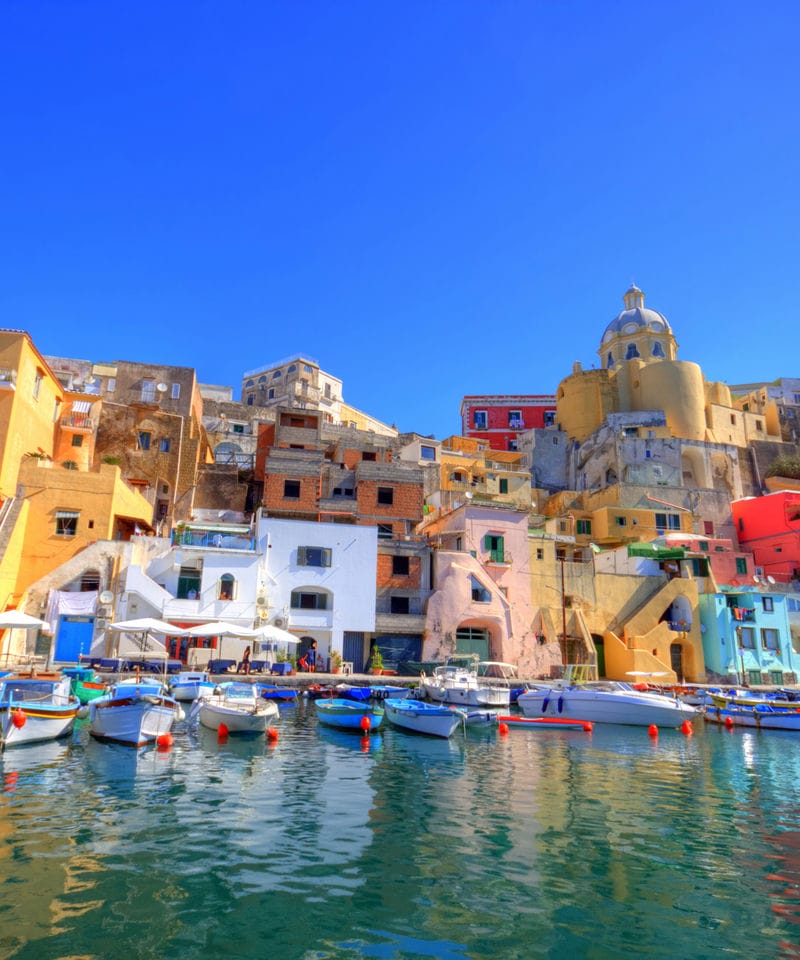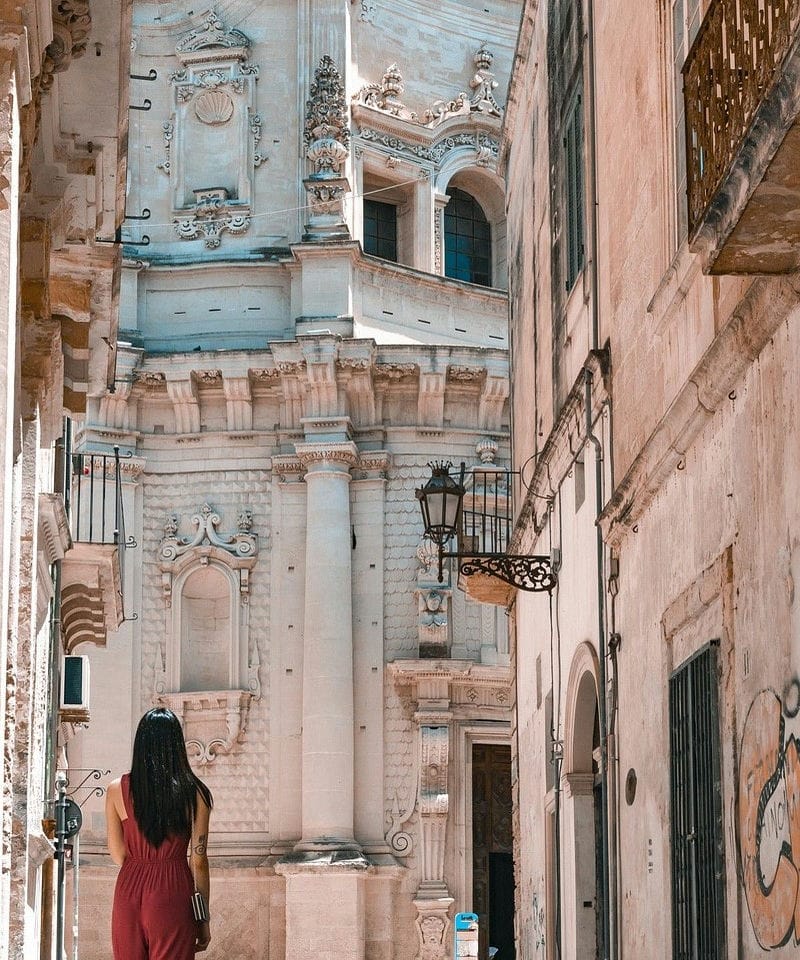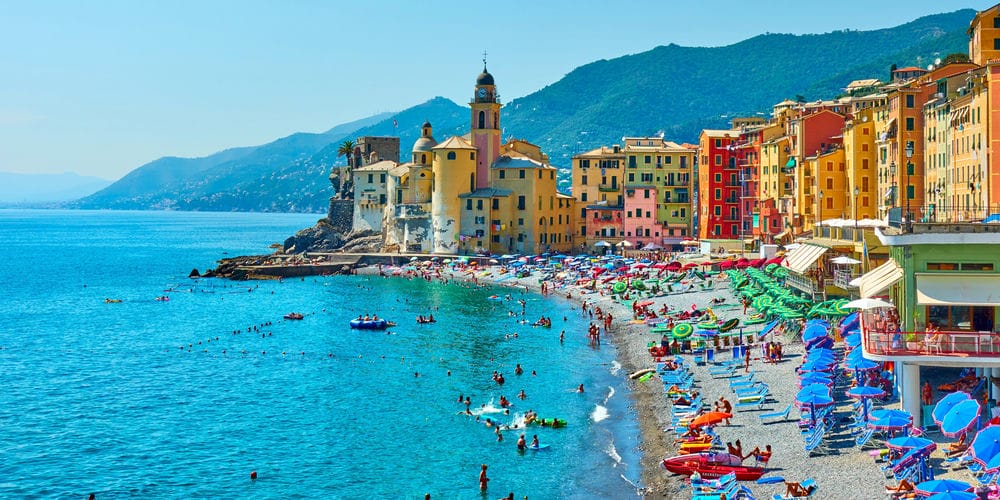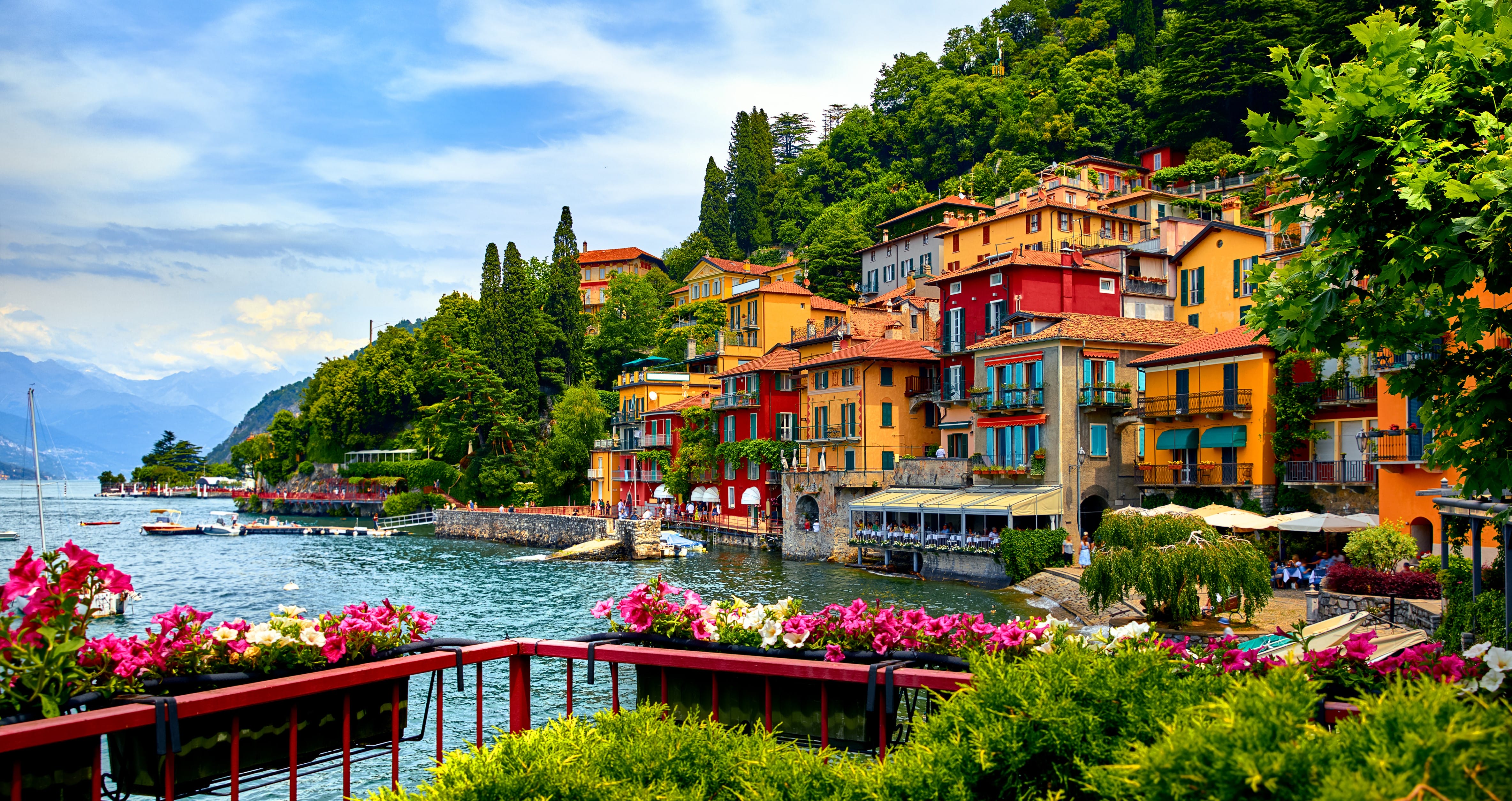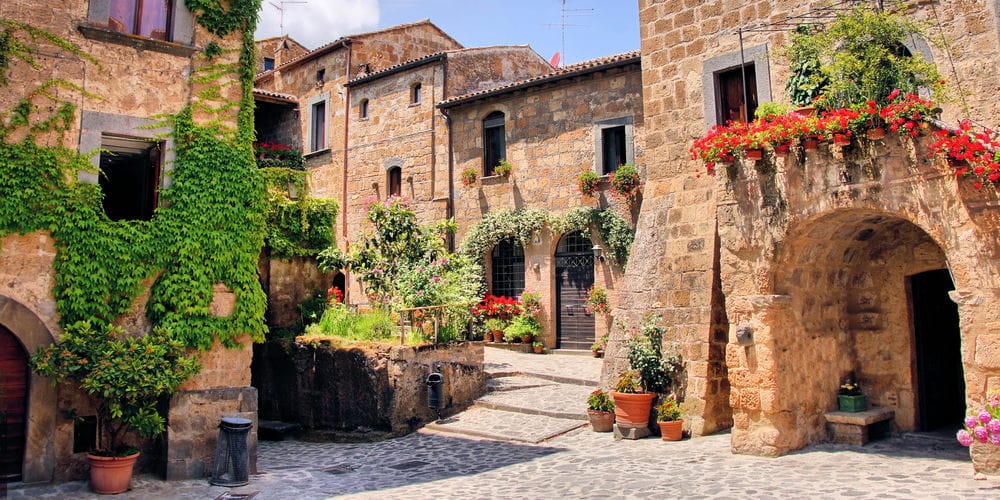
Italian Art and Architecture: An Overview
Key Takeaways
- Italian art and architecture have deep historical roots.
- Major cities showcase both classic and modern masterpieces.
- Their influence reaches far beyond Italy’s borders.

Italian art and architecture reflect a long history filled with creativity, innovation, and beauty.
From ancient Roman ruins to the decorative wonders of the Renaissance and Baroque, Italy is home to some of the world’s most admired masterpieces and buildings.
Italian cities like Florence, Rome, and Venice are filled with famous paintings, sculptures, and striking buildings.
Visitors can see grand cathedrals, detailed statues, and stunning public squares that showcase both old and new art styles.
With every step, there is something remarkable to discover.
Ancient Roman Empire’s Impact On Italian Artistic Traditions

The ancient Roman Empire shaped much of what people know about early Italian art and architecture. The Colosseum, known for its gladiatorial contests, is a prime example of Roman engineering and architectural prowess.
Romans built large public spaces, such as the forum and the basilica, that set new standards for design and function.
They used arches, domes, and concrete to build bigger and more durable buildings.
Sculpture and painting also thrived. Romans created realistic statues, wall paintings, and mosaics, often showing events and figures from daily life or mythology.
Techniques like the use of frescoes on walls continued to influence later periods.
Architectural structures like the palazzo, the ancestor to later Italian city palaces, began to develop. Roman ideas about symmetry, columns, and open courtyards carried on into later Italian art.
Early Influences And Key Characteristics Of Pre-Renaissance Art And Architecture

Before the Renaissance, Italian art absorbed ideas from several cultures, including Byzantine and Medieval styles. Religious themes dominated, with much of the art focused on Christian stories and figures.
Gold backgrounds and flat, symbolic images were common in paintings and mosaics.
Buildings from this era often featured the Romanesque architecture style, with thick stone walls, round arches, and small windows. These structures aimed for strength and stability.
As time passed, the Gothic architecture style appeared, adding pointed arches, larger windows, and more height.
The Gothic style, characterized by pointed arches and ribbed vaults, also introduced flying buttresses, which were essential in supporting the structure and aesthetics of buildings like the Milan Cathedral.
Early Italian artists and architects laid the foundations for later advances. Their work merged local traditions with outside influences, setting the stage for the art and architecture that followed.
The Renaissance: The Golden Age Of Italian Art And Architecture

The Italian Renaissance sparked a major shift in art and architecture, driven by humanism, scientific study, and a renewed interest in classical antiquity.
Patrons like the Medici family, innovative artists, and groundbreaking architects reshaped cities and influenced future generations.
Florence As The Cradle Of The Renaissance
Florence became the center for artistic invention in the early 15th century. Families such as the Medici supported young artists and architects, funding projects throughout the city.
Cosimo I de’ Medici and Lorenzo de’ Medici played leading roles as patrons.
Florence fostered a unique blend of civic pride and competition among artists. Major buildings, such as churches and palaces, featured new artistic styles and techniques.
Local guilds and leaders commissioned projects to reflect the city’s wealth and cultural power.
Artists in Florence, including Bronzino and Vasari, experimented with perspective and naturalistic detail. Their work shaped the core ideas and methods of Renaissance art in Italy.
Key Artists: Leonardo Da Vinci, Michelangelo, Raphael
Leonardo da Vinci used a scientific approach and detailed studies of human anatomy. His works, such as “The Last Supper” and “Mona Lisa,” combined lifelike detail with emotional expression.
Leonardo’s notebooks are filled with inventions and sketches that show his wide range of talents.
Michelangelo created masterpieces in both sculpture and painting. His “David” and the ceiling of the Sistine Chapel displayed new standards for beauty, movement, and realism.
Michelangelo also worked as an architect, helping design Saint Peter’s Basilica in Rome.
Raphael balanced structure and grace, seen in works like “The School of Athens.” His style blended elements from both Leonardo and Michelangelo.
Raphael’s work at the Vatican for Pope Julius II is considered a high point in Renaissance art.
Architectural Innovations: Brunelleschi’s Dome, Classical Revival
Filippo Brunelleschi, recognized as both an architect and an artist, changed architecture by designing the dome for Florence’s Cathedral (Duomo).
He used mathematics and ancient Roman techniques to build a massive self-supporting dome—an engineering first in the 15th century.
The Renaissance saw a return to classical Roman architecture. Architects focused on columns, arches, domes, and symmetry.
This “classical revival” replaced the Gothic tradition and influenced buildings across Italy.
Tables like the one below show key features:
|
Architect |
Innovation |
Building/Project |
|---|---|---|
|
Brunelleschi |
Dome construction techniques |
Florence Cathedral (Duomo) |
|
Michelangelo |
St. Peter’s Basilica design |
Saint Peter’s Basilica, Rome |
Notable Masterpieces And Their Influence On Western Art
Renaissance artists produced works that became models for later generations. Michelangelo’s “David” set new standards for sculpted human form.
Leonardo da Vinci’s “The Last Supper” brought biblical themes to life with realistic expressions and spatial depth, marking a significant moment in art history.
Paintings by Titian introduced rich, vibrant color and stronger emotion. Bronzino’s portraits captured the personalities of Florence’s elite.
Vasari wrote important histories about Renaissance artists, shaping how people remember the era.
These masterpieces spread ideas of perspective, anatomy, and realism. They played a key role in shaping Western art, leaving a clear mark on painting, sculpture, and architecture for centuries.
Baroque Art And Architecture In Italy

Baroque art and architecture in Italy rose in the 17th century, influenced by religious changes of the Counter-Reformation.
Artists and architects used dynamic designs and strong emotion to capture attention and inspire belief.
Characteristics Of Baroque Style: Drama, Grandeur, Movement
Baroque style is known for its vivid drama and sense of motion. Lines, shapes, and light draw the viewer's eyes, making each piece feel active and alive.
Large spaces and bold details give buildings and paintings a feeling of grandeur.
Sculptures and paintings often show moments of high emotion, such as surprise, awe, or devotion. Baroque art uses strong contrasts of light and dark, called chiaroscuro.
The purpose was not only to impress but also to teach, especially as part of the Catholic response to the Protestant Reformation.
Shapes are often curved rather than straight, and rooms may seem to flow into each other. This style helped create powerful, engaging spaces that made people feel part of the scene.
Leading Artists And Architects: Caravaggio, Bernini, Borromini
Caravaggio painted realistic figures and used sharp contrasts of light and shadow. His religious scenes often look like ordinary people caught in dramatic moments.
Gian Lorenzo Bernini led the way in sculpture and architecture. He made lifelike statues that seem to move and express deep feelings, such as his famous "Ecstasy of Saint Teresa."
Bernini also designed St. Peter’s Square in Vatican City.
Francesco Borromini used creative curves and unusual forms in buildings. His designs, such as San Carlo alle Quattro Fontane in Rome, show how geometry and movement can blend in stone.
Together, these figures set new standards in art and architecture.
Famous Baroque Buildings And Artworks
Many Baroque works in Italy remain famous today.
Major buildings include:
- St. Peter’s Basilica and its square (Bernini, Rome)
- San Carlo alle Quattro Fontane (Borromini, Rome)
- Church of Gesù Nuovo (Naples)
Important artworks:
Caravaggio’s "The Calling of Saint Matthew" uses shadow and light to highlight emotion and story.
Bernini’s "The Ecstasy of Saint Teresa" is noted for its lifelike detail and spiritual force.
These places and works show how Baroque Italy mixed religious aims with dramatic style to engage viewers.
Neoclassicism And Beyond: Italian Art And Architecture In The 18th And 19th Centuries

Italian art and classical architecture changed greatly in the 18th and 19th centuries. Artists and architects began to look back at ancient Greece and Rome for inspiration, which led to new styles based on symmetry and order.
The Return To Classical Ideals
Neoclassicism became the leading style in Italy during this time. Artists and architects tried to bring back the calm and balanced look from ancient Greece and Rome.
Buildings often had straight lines, columns, and plain walls.
Unlike the fancy Baroque and Rococo styles before it, Neoclassicism focused on simplicity and structure. The ideas of harmony, proportion, and restraint were important.
Many designers were inspired by the ruins of Pompeii and Herculaneum, which were being studied and uncovered at the time.
Andrea Palladio was a key influence long before Neoclassicism, and his work continued to guide architects in the 18th century. His clear use of classical rules set the stage for later designs.
In art, painters chose themes from Roman history and mythology over religious stories.
Key Figures And Works
Several Italian artists and architects became well-known for their Neoclassical work. Among architects, Giuseppe Piermarini designed the Teatro alla Scala opera house in Milan, which used classic forms and clean lines.
Antonio Canova became a famous sculptor by making marble statues that looked calm and graceful, much like Greek originals. His sculptures of figures like Napoleon and mythological subjects were known for their smooth finish and lifelike forms.
Key Table of Figures and Works:
|
Name |
Role |
Notable Work |
|---|---|---|
|
Giuseppe Piermarini |
Architect |
Teatro alla Scala |
|
Antonio Canova |
Sculptor |
Pauline Bonaparte as Venus Victrix |
|
Luigi Vanvitelli |
Architect |
Royal Palace of Caserta |
These works often used simple geometric shapes and reflected the renewed interest in antiquity.
Transition Into Modernity
By the late 19th century, Neoclassicism faded from Western architecture. Italian art and architecture began to change again.
Styles such as Romanticism and Realism replaced the strict classical focus. Architects started using new materials like iron and glass, which made different types of buildings possible.
Artists moved away from classical myths and began painting scenes of everyday life. Urban centers like Milan, Rome, and Turin saw new civic projects, including railway stations and large public buildings.
Modern influences from other parts of Europe grew stronger. This period set the groundwork for even more change in the 20th century, as Italian creativity continued to adapt and grow.
Modern And Contemporary Italian Art And Architecture

Modern Italian art and architecture developed alongside advances in technology and new materials. Artists and architects from Italy explored styles that broke with the past while still drawing inspiration from classical roots.
Futurism And 20th-Century Innovation
Futurism began in Italy in the early 1900s. Filippo Tommaso Marinetti led the movement, wanting art to celebrate speed, technology, and change.
Painters like Umberto Boccioni, Giacomo Balla, and Gino Severini used bold colors and sharp lines to show movement and energy. After World War II, Italy saw new styles in both art and architecture.
The Rationalist movement, with figures like Giuseppe Terragni, used glass, steel, and concrete to create clean, simple buildings.
One notable example from the Fascist period is the Casa del Fascio in Como, designed by Giuseppe Terragni, which exemplifies the Rationalist movement with its functional design and minimalist decor.
This movement shaped many public buildings and homes in cities across the country.
Key points:
- Futurism stressed modern life and technology.
- Rationalism brought minimalist design to architecture.
- Change was a key feature of Italian creativity during the 20th century.
Prominent Modern Architects And Artists
Many modern Italian architects and artists left a strong mark around the world.
Renzo Piano, famous for co-designing the Centre Pompidou in Paris, also created the Rome Auditorium and The Shard in London.
Another leading architect, Massimiliano Fuksas, is known for innovative structures like the Fiera Milano complex, which also inspired conversations in literature.
Artists such as Lucio Fontana introduced new ideas to contemporary art.
Fontana’s “Spatialism” involved slashing or puncturing canvases, challenging how people view and interact with art.
Piero Manzoni became known for his experimental works using unexpected materials.
|
Name |
Field |
Notable Work |
|---|---|---|
|
Renzo Piano |
Architecture |
Centre Pompidou, The Shard |
|
Massimiliano Fuksas |
Architecture |
Fiera Milano, EUR cloud |
|
Lucio Fontana |
Visual Arts |
“Concetto Spaziale” series |
Integration Of Tradition And Innovation In Contemporary Works
Contemporary Italian art and architecture often combine modern elements with historic forms.
In Rome, the MAXXI National Museum of 21st Century Art, designed by Zaha Hadid, uses sweeping curves inspired by ancient arches and aqueducts but built with concrete and glass.
Old industrial sites and castles in Italy now serve as galleries and museums. This preserves history while creating spaces for new art.
Artists and architects continue to respect Italy’s heritage, blending it with fresh ideas and modern techniques. Many contemporary projects use sustainable design and aim to connect communities.
These efforts allow Italian culture to evolve without losing its identity. The mix of tradition and innovation makes new Italian art and architecture both unique and deeply rooted in the past.
Italian Art And Architecture In Major Cities

Italy’s biggest cities show different styles of art and architecture. Ancient ruins, cathedrals, basilicas, and museums give each city a unique look and history.
Rome: Ancient Ruins, Baroque Churches, Vatican Treasures
Rome is famous for ancient landmarks like the Colosseum, the Roman Forum, and the Pantheon. These ruins show the skill of Roman builders and the power of the old Empire.
Baroque architecture appears in churches such as St. Peter’s Basilica and Sant’Agnese in Agone. Curved lines, domes, and detailed statues are common.
The Vatican Museums house paintings and statues by artists like Michelangelo and Raphael. The Sistine Chapel ceiling is a major highlight.
Rome blends ancient architecture with later styles across the city.
Florence: The Uffizi, Duomo, Renaissance Masterpieces
Florence is known as the heart of the Renaissance. It is home to the Uffizi Gallery, which displays works by Botticelli, Leonardo da Vinci, and Michelangelo.
The gallery is a key stop for art lovers. The Duomo of Florence, also called the Cathedral of Santa Maria del Fiore, features a massive dome designed by Brunelleschi.
Its red-tiled roof stands out in the city skyline. Renaissance architecture shapes Florence’s city center.
Elegant churches, palaces, and statues fill the streets and squares.
Venice: Byzantine And Gothic Influences, St. Mark’s Basilica
Venice mixes Byzantine and Gothic styles. The St. Mark’s Basilica is famous for its golden mosaics, domes, and marble columns.
These features reflect Venice’s long connections with Eastern empires. Other buildings, like the Doge’s Palace, show pointed arches and detailed stonework, typical of Gothic design.
The city’s narrow alleys and canals add to its special character. Art from Venice often uses bright colors and light to show the city’s unique atmosphere.
Many churches and palaces display Venetian paintings and mosaics.
Milan: Gothic Cathedral, Modern Skyscrapers
Milan’s most famous building is the Duomo di Milano. This large Gothic cathedral has many spires and statues on its white marble exterior.
The view from the rooftop shows much of the city. The city is also a center for new architecture.
Modern skyscrapers stand alongside older palaces and churches.
The Mole Antonelliana in nearby Turin is an example of striking later architecture, but Milan focuses on both classic and modern forms.
Moreover, Galleria Vittorio Emanuele II shopping arcade is considered one of the world's oldest shopping malls. It was inaugurated in 1877 and is a significant landmark in Milan.
The Galleria connects Piazza del Duomo to Piazza della Scala and is renowned for its elegant architecture, featuring a glass and iron roof and a central octagonal space under a glass dome.
Milan’s art scene includes the famous Last Supper painting by Leonardo da Vinci and many contemporary galleries and museums.
It is a city that values tradition and innovation in both art and architecture.
Iconic Masterpieces Of Italian Art And Architecture

Many of the world’s most famous paintings, sculptures, and buildings come from Italy. Artists like Leonardo da Vinci, Michelangelo, and Botticelli made lasting works that still draw millions of visitors each year.
Top 10 Masterpieces Overview
Italy is home to many masterpieces that stand out in the history of art and architecture. Below is a list of ten pieces that have had a huge impact:
- Vitruvian Man by Leonardo da Vinci
- The Birth of Venus by Sandro Botticelli
- David by Michelangelo
- Sistine Chapel Ceiling by Michelangelo
- Venus of Urbino by Titian
- Burial of St Lucy by Caravaggio
- The Dome of St. Peter’s Basilica, designed by Michelangelo
- The Last Supper by Leonardo da Vinci
- Primavera by Sandro Botticelli
- School of Athens by Raphael
These works include paintings, sculptures, and buildings. Some, like the Sistine Chapel, feature large frescoes that cover entire walls and ceilings.
The Influence Of Italian Art And Architecture Worldwide

Italian art and architecture have shaped many cultures beyond Italy’s borders. The techniques, styles, and theories developed in Italy form the foundation for much of Western art and design.
How Italian Styles Shaped Global Art And Architecture
Renaissance artists like Leonardo da Vinci and Michelangelo introduced realistic human forms, perspective, and anatomical precision. Their influence inspired artists across Europe.
Their ideas spread to France, Spain, the Netherlands, and beyond, leading other countries to adopt Italian traditions.
In architecture, Italian elements such as columns, arches, and domes became common in government buildings, churches, and homes worldwide.
Baroque and Neoclassical styles from Italy led to similar designs in places like the United States, Latin America, and Russia. Many cities globally still use Italian techniques in their monuments and public spaces.
Artists in other regions copied and developed Italian mosaics and frescoes. The spread of these styles changed the way people from many cultures build and decorate important structures.
Key Features Influenced Globally
- Use of perspective in painting
- Columns, domes, and arches in buildings
- Fresco and mosaic decoration
- Realistic human figures and emotions
Italian Contributions To Art Education And Theory
Italy became a center for teaching art during the Renaissance. The first formal art academies opened in Florence, Venice, and Rome.
These schools taught drawing, painting, sculpture, and architectural design using methods developed by Italian masters.
Books written by Italians, such as Giorgio Vasari’s Lives of the Artists, helped spread knowledge about technique and theory.
These texts became important resources in art schools across Europe. Italian teachers encouraged sketching from live models, careful study of anatomy, and the use of perspective.
Italian art theory also affected debates about what made art “great.” Ideas first written in Italy later shaped how museums and schools worldwide understood and taught the arts.
Italian methods formed the basis of classical art education for hundreds of years.
Experiencing Italian Art And Architecture Today

Italy offers direct access to centuries of creative achievement.
Visitors see famous works up close, learn their history, and better understand Italian culture.
Visiting Museums, Galleries, And Historical Sites
Museums in Italy house many masterpieces.
The Uffizi Gallery in Florence holds paintings by Botticelli and da Vinci.
In Rome, the Vatican Museums display Michelangelo's ceiling in the Sistine Chapel.
The Galleria Borghese features sculptures by Bernini.
Art lovers can explore Venice's Peggy Guggenheim Collection for modern art.
Smaller towns, like Siena and Assisi, have unique local art in their churches and museums.
These sites protect artworks and offer educational tools, helpful guides, and interactive displays.
Historic buildings also stand as works of art.
People tour ancient Roman ruins, Gothic cathedrals, and Renaissance palaces.
Many of these sites offer clear signage, multilingual information, and quiet spaces for reflection.
|
Location |
Highlight |
Type |
|---|---|---|
|
Florence Uffizi |
Botticelli’s Birth of Venus |
Painting |
|
Rome Vatican Museums |
Sistine Chapel Ceiling |
Fresco |
|
Venice Doge’s Palace |
Ornate Venetian Chambers |
Architecture |
Guided Tours And Immersive Experiences
Guided tours give more context to Italian art and architecture.
Expert guides explain the meaning of different artworks, historic events, and building techniques.
Many tours use headphones so visitors can listen while looking around.
Walking tours often cover several key sites in a city.
For example, in Florence, tours move from the Duomo to famous squares and art museums.
In Rome, guides take groups through the Colosseum, Roman Forum, and local basilicas.
Immersive experiences include hands-on workshops, such as painting or sculpture classes.
Some places offer virtual reality headsets to show ancient buildings as they once looked.
These activities help visitors connect with Italy’s artistic heritage in a practical way.
Group sizes and prices vary, so travelers can pick what suits them best.
Final Thoughts

Italian art and architecture have shaped both Italy and much of the modern world.
Their influence is visible in many countries today through buildings, paintings, and design principles.
From the Roman Colosseum to Renaissance cathedrals, Italian architecture set standards for structure and beauty.
Artists like Leonardo da Vinci and Michelangelo inspired generations with their techniques and creativity.
Italian art and architecture continue to shape education, tourism, and city planning.
Students around the world study Italian masters, and many travelers visit Italy to see its historic sites.
Some key contributions include:
- Classical columns and arches are often used in modern architecture.
- Realistic painting and sculpture techniques that changed how artists work.
- Blending of function and style that many designers still use.
These traditions have left a lasting mark and remain relevant today, both in Italy and far beyond its borders.





